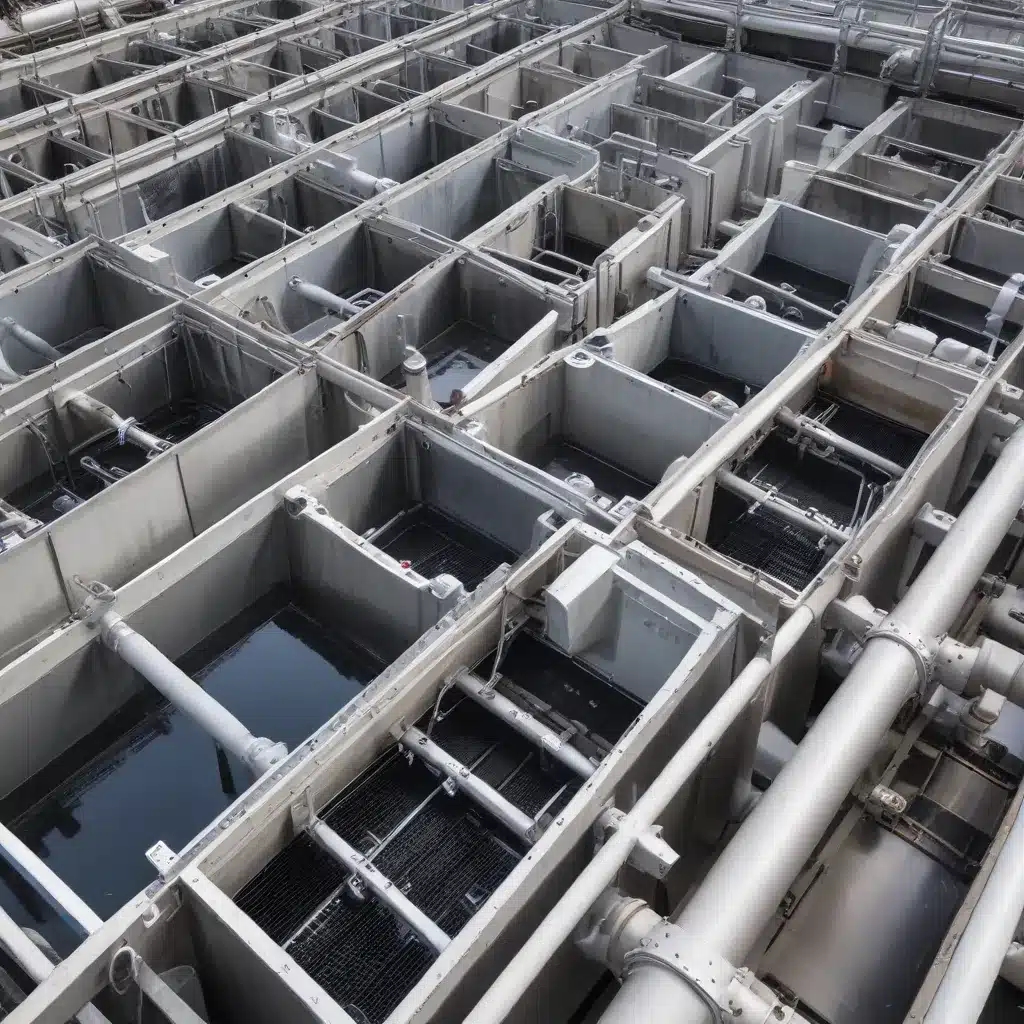
As a seasoned expert in the field of air-cooled heat exchangers, I’m excited to share practical tips and in-depth insights on how to optimize the design of these critical components for enhanced energy efficiency in wastewater treatment facilities. Air-cooled heat exchangers play a pivotal role in managing the thermal loads and energy demands of these essential infrastructure assets, making their performance a crucial consideration for facility managers and engineers.
Understanding the Unique Challenges of Wastewater Treatment Facilities
Wastewater treatment facilities face a unique set of challenges when it comes to cooling and heat management. These facilities often operate in harsh environments, dealing with elevated levels of contaminants, humidity, and ambient temperatures that can strain the performance of traditional cooling systems. Conventional water-cooled heat exchangers, for instance, may be prone to fouling, scaling, and corrosion issues due to the presence of dissolved solids and other impurities in the wastewater.
Air-cooled heat exchangers, on the other hand, offer a more resilient solution, eliminating the need for water intake and the associated maintenance and treatment requirements. However, to truly optimize the energy efficiency of air-cooled heat exchangers in wastewater treatment facilities, it’s essential to understand the unique design considerations and operational factors that come into play.
Optimizing Air-Cooled Heat Exchanger Design
Enhancing Airflow Efficiency
One of the key design considerations for air-cooled heat exchangers in wastewater treatment facilities is the optimization of airflow. Ensuring efficient and uniform air distribution across the heat transfer surfaces is crucial for maximizing heat dissipation and reducing energy consumption.
Strategies to enhance airflow efficiency include:
- Optimizing fin design: Carefully selecting fin geometry, spacing, and material can improve air-side heat transfer coefficients and reduce pressure drop, leading to enhanced thermal performance and energy savings.
- Incorporating advanced fan technologies: Implementing high-efficiency fans, such as variable-speed or EC (electronically commutated) motors, can provide precise airflow control and reduce overall energy consumption.
- Implementing airflow management systems: Incorporating baffles, flow guides, and other airflow management techniques can help direct air more effectively through the heat exchanger, minimizing dead spots and improving overall heat transfer.
Mitigating Fouling and Corrosion Challenges
Wastewater treatment facilities often contend with elevated levels of contaminants, including dissolved solids, suspended particles, and corrosive elements. These can pose significant challenges for air-cooled heat exchangers, leading to reduced heat transfer efficiency, increased pressure drop, and potential equipment failure.
Strategies to address fouling and corrosion include:
- Selecting corrosion-resistant materials: Utilizing materials such as stainless steel, titanium, or specialized coatings can enhance the durability and longevity of air-cooled heat exchangers in harsh wastewater environments.
- Implementing effective cleaning and maintenance protocols: Regular cleaning and maintenance procedures, such as chemical cleaning, mechanical brushing, or high-pressure water flushing, can help mitigate the buildup of contaminants and maintain optimal heat transfer performance.
- Incorporating self-cleaning technologies: Exploring innovative self-cleaning mechanisms, such as vibration-induced cleaning or automated water-spray systems, can help automate the cleaning process and reduce maintenance requirements.
Optimizing Thermal Management and Energy Efficiency
Ensuring the overall thermal management and energy efficiency of air-cooled heat exchangers is crucial in wastewater treatment facilities, where energy consumption can be a significant operational cost.
Strategies to optimize thermal management and energy efficiency include:
- Leveraging advanced heat transfer enhancement techniques: Employing techniques such as finned-tube heat exchangers, microchannel designs, or heat pipe-based systems can improve the overall heat transfer performance and reduce energy consumption.
- Incorporating smart control systems: Integrating advanced control algorithms, sensors, and monitoring systems can enable dynamic adjustment of airflow, fan speed, and other operating parameters to match varying thermal loads and optimize energy use.
- Exploring waste heat recovery opportunities: Investigating ways to capture and repurpose the waste heat generated by air-cooled heat exchangers, such as using it for process heating or cogeneration, can further enhance the overall energy efficiency of the facility.
Ensuring Reliable and Resilient Operation
In the demanding environment of wastewater treatment facilities, the reliability and resilience of air-cooled heat exchangers are paramount. Unplanned downtime or equipment failures can disrupt critical operations and lead to significant operational and environmental consequences.
Strategies to enhance reliability and resilience include:
- Implementing robust maintenance and inspection programs: Developing comprehensive maintenance protocols, including regular inspections, preventive maintenance, and predictive analytics, can help identify and address potential issues before they lead to equipment failures.
- Selecting high-quality components and materials: Choosing air-cooled heat exchanger components and materials that are specifically engineered for harsh wastewater environments can improve the overall durability and service life of the equipment.
- Incorporating redundancy and backup systems: Designing air-cooled heat exchanger systems with redundant components or backup cooling systems can help ensure continuous operation and maintain critical thermal management capabilities in the event of a failure.
Integrating Air-Cooled Heat Exchangers for Improved Energy Efficiency
By adopting a comprehensive approach to the design, engineering, and maintenance of air-cooled heat exchangers in wastewater treatment facilities, facility managers and engineers can unlock significant energy efficiency gains. This, in turn, can lead to reduced operational costs, lower environmental impact, and a more sustainable overall operation.
To further support the optimization of air-cooled heat exchanger performance, the Air Cooled Heat Exchangers blog offers a wealth of resources, including case studies, industry insights, and technical guides. We encourage you to explore our content to deepen your understanding and find practical solutions for your specific wastewater treatment facility needs.
Remember, the key to unlocking the full potential of air-cooled heat exchangers in wastewater treatment lies in a proactive, holistic approach that addresses the unique challenges of this demanding environment. By prioritizing design optimization, maintenance best practices, and energy-efficient strategies, you can position your facility for long-term success and environmental sustainability.

